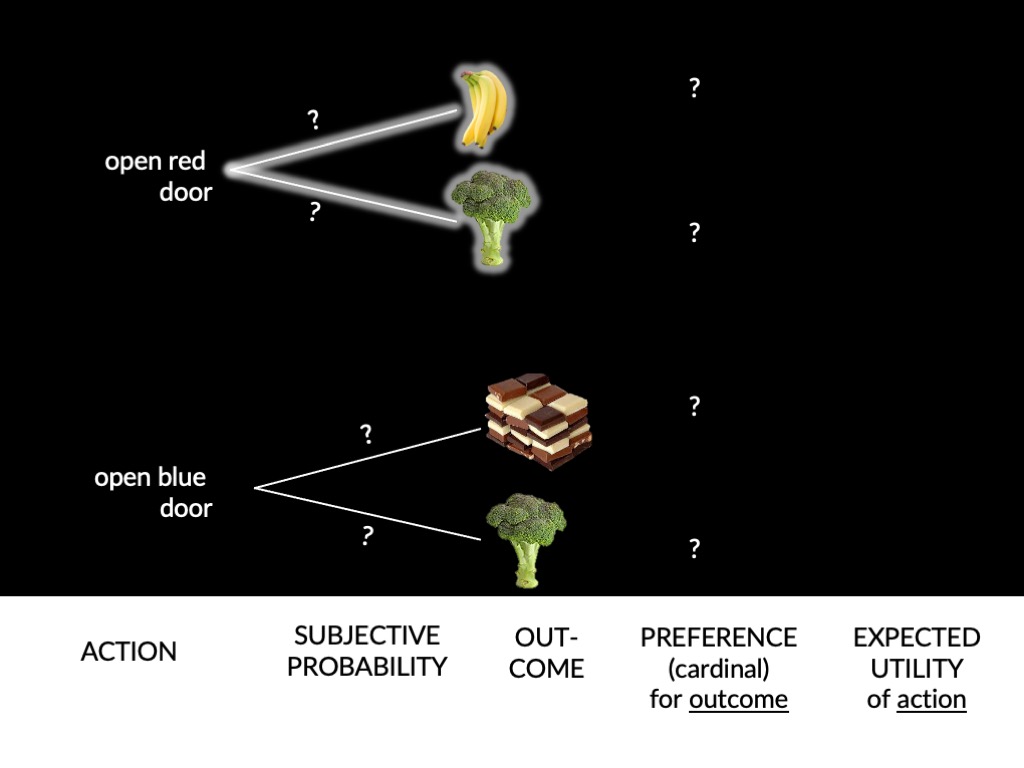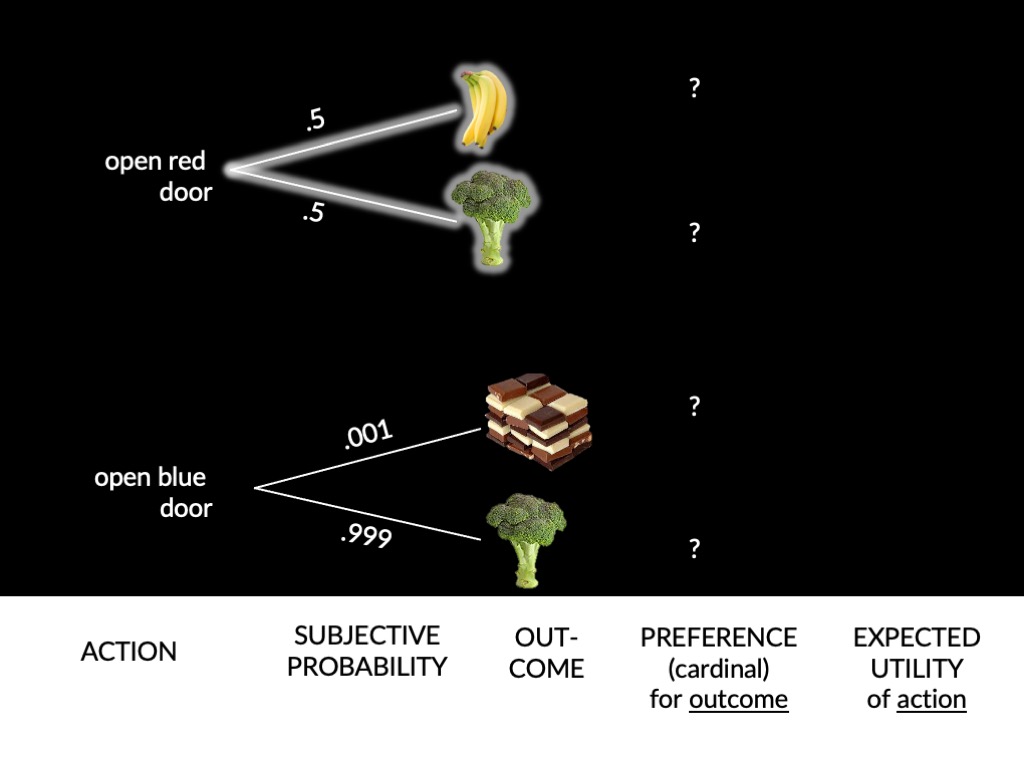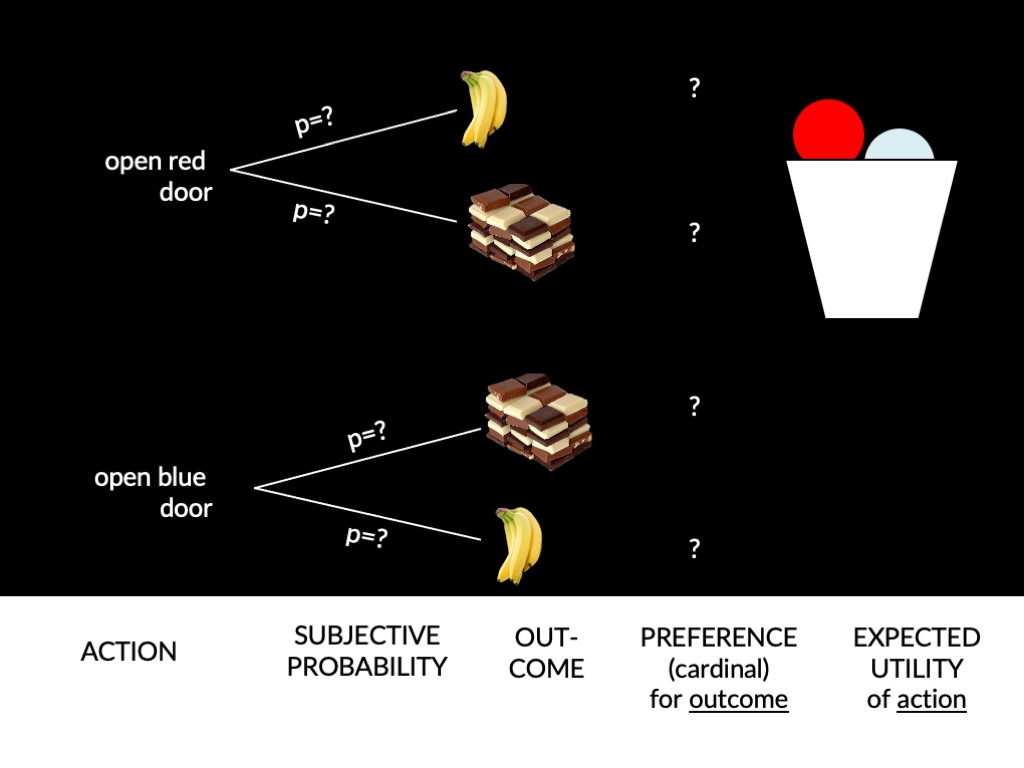Click here and press the right key for the next slide.
(This may not work on mobile or ipad. You can try using chrome or firefox, but even that may fail. Sorry.)
also ...
Press the left key to go backwards (or swipe right)
Press n to toggle whether notes are shown (or add '?notes' to the url before the #)
Press m or double tap to slide thumbnails (menu)
Press ? at any time to show the keyboard shortcuts
What Are Preferences?
This book has ‘a philosophical end: elucidation of the notions of subjective probability and subjective desirability or utility’
(Jeffrey, 1983, p. xi)




cannot infer preferences unless we know subjective probabilities
‘the revealed preference revolution of the 1930s (Samuelson, 1938)
... replaced the supposition that people are attempting to optimize any externally given criterion (e.g., some psychologically interpretable motion of utility, perhaps to be quantified in units of pleasure and pain).
Chater (2014)
‘Suppose that A and B are consequences between which the agent is not indifferent, and that N is an ethically neutral condition [i.e. the agent is indifferent between N and not N].
Then N has probability 1/2 if and only if the agent is indifferent between the following two gambles:
1. B if N, A if not
2. A if N, B if not’
(Jeffrey, 1983, p. 47)



What have we done?
Your actions are a function of two things,
subjective probabilities
and preferences.
Ramsey’s method allows us to
infer both of these
from observations of the actions you perform
plus some background assumptions (axioms).
But what did we assume in characterising preferences?
transitivity
For any A, B, C ∈ S: if A⪯B and B⪯C then A⪯C.
completeness
For any A, B ∈ S: either A⪯B or B⪯A
continuity
‘Continuity implies that no outcome is so bad that you would not be willing to take some gamble that might result in you ending up with that outcome [...] provided that the chance of the bad outcome is small enough.’
independence
roughly, if you prefer A to B then you should prefer A and C to B and C.
Steele & Stefánsson (2020, p. §2.3)
things the theory
assumes
actions
outcomes
+ some axioms (background assumptions)
things the theory characterises
preference
subjective probability
rationality (?!)
This book has ‘a philosophical end: elucidation of the notions of subjective probability and subjective desirability or utility’
(Jeffrey, 1983, p. xi)
The axioms can be regarded as implicitly defining
preference
and
subjective probability.
why necessary?
1. We as researchers need a shared understanding of belief and desire.
2. There are three potential sources of shared understanding: folk psychology, philosophy and decision theory.
3. Folk psychology does not provide a shared understanding.
4. Nor does philosophy.
Therefore:
5. We need decision theory to provide a shared understanding.
This book has ‘a philosophical end: elucidation of the notions of subjective probability and subjective desirability or utility’
(Jeffrey, 1983, p. xi)
‘we should think of
meanings and beliefs
as interrelated constructs of a single theory
just as we already view
subjective values and probabilities
as interrelated constructs of decision theory’
(Davidson, 1974, p. 146)
why necessary?
for shared understanding!
so far ...
1. We understand what decision theory is;
2. ... and how it can be used to provide us as researchers with a shared understanding of belief and desire.
3. This is necessary because neither folk psychology nor philosophy provide a shared understanding.